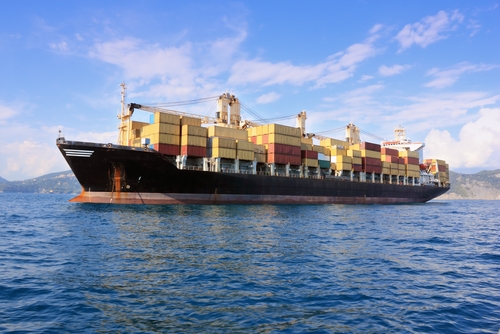Why is the Commission proposing to change the legislation on marine fuels?
There are three main reasons for the proposed changes.
First of all, emissions of sulphur dioxide (SO2) and nitrogen (NOx) from maritime transport are expected to exceed total emissions of these pollutants from all land-based sources in 2020. Measures to reduce maritime emissions are therefore timely and necessary. Since efforts to reduce maritime sources have historically been more limited than efforts to curb land-based sources, a reduction of emissions from shipping is now more cost-effective than further efforts to reduce land-based sources.
Secondly, the International Maritime Organisation (IMO) recently adopted new standards for the sulphur content of marine fuels. As a result, the EU legislation needs to be revised to reflect these new requirements.
Finally, the European Parliament and the Council requested the Commission to carry out a review on the implementation of the Directive on the sulphur content of certain liquid fuels. This review identified a need to improve its implementation. In particular, the provisions on sampling of marine fuels, their analysis and the reporting of the results by Member States need to be improved and harmonised.
What changes is the Commission proposing?
The key elements of the revision are as follows:
The Directive will be aligned with the latest provisions adopted by the International Maritime Organisation (IMO) on the sulphur content of marine fuels. As a result, the maximum permissible sulphur content of maritime fuels used in sensitive areas which are defined as SOx Emission Control Areas (SECAs) under the 1997 IMO MARPOL Convention will fall from the previous level of 1.5 % to 0.1 %, as of 1 January 2015. These areas are currently the Baltic Sea, the North Sea and the English Channel. Other areas are to reduce their sulphur emissions from 4.5 % down to 0.5 % by 1 January 2020.
The Directive will be adapted to the IMO provisions on alternative compliance methods such as exhaust gas cleaning systems.
The link between the stricter fuel standards in SOx Emissions Control Areas (SECAs) and the fuel requirements for passenger ships on regular service will be maintained.
The implementation of the Directive will be improved by harmonising and strengthening provisions on monitoring of compliance and reporting.
What will be the effects of the proposal for European citizens?
Emissions from ships are transported over considerable distances, affecting inland air quality far beyond coastal areas, so the proposed measures will improve the quality of ambient air. The proposals affect not only exposure to SO2 emissions, but particulate matter levels in ambient air as well, as SO2 is converted into particulate matter (PM) in the atmosphere. Particulate matter is the pollutant with the greatest known impact on human health.
The cost-benefit analysis carried out by the European Commission in the context of the review of the Directive on sulphur emissions of liquid fuels valued the annual health benefits at €15 to 34 billion for EU27, with benefits exceeding the costs by a factor of 3 to 25, depending on the assumptions made.
The costs induced by the proposed legislation stem mainly from an increase of the price of marine fuels. Since transport by ship accounts on average for less than 1% of the retail price of a consumer product, the impact on consumer products is considered to be negligible. The price for shipping services such as ferries is however likely to increase.
Emissions from maritime transport are also addressed at international level by the International Maritime Organisation. Does the proposed legislation transpose these international rules or does it go beyond them?
The Commission proposal aims to transpose the international rules on emissions from maritime transport agreed by the International Maritime Organisation. In particular, stricter standards for sulphur content of marine fuels will be introduced. Also, a broad range of methods that could be used (other than fuel with low sulphur content) to comply with the stricter rules will be made available to ship operators. Including these international rules in European legislation will help to properly monitor and enforce them in the EU. The Commission proposal however also includes additional adjustments, notably stricter sulphur standards for passenger ships on regular service in sea areas not designated as SECAs (including the Mediterranean Sea) and stronger rules on monitoring and enforcement of the rules on sulphur standards.
What are SOx emissions control areas and why do stricter requirements apply there?
Sulphur emissions control areas are sea areas that need special environmental protection because of their particularly fragile ecosystems. That is why stricter standards on the sulphur content of marine fuels apply there. These areas are designated by the International Maritime Organisation. Existing areas include:
The Baltic Sea (since 2005);
The North Sea (since 2006);
The North American Emission Control Area, which includes most of the US and Canadian coast (this area is also designated as NOx Emission Control Area).
Why are some of the EU sea areas designated as SECAs and others not?
Currently the Baltic Sea and the North Sea (including the English Channel) are declared as SECAs, unlike the Black Sea, the Mediterranean and the East Atlantic. The reasons for this discrepancy result from the different sensitivities of these sea areas to pollution. The Northern Sea areas are more sensitive to acidification caused by SO2 (acid rain) in particular. The coastal states of this area therefore submitted a request to the IMO to designate these areas as SECAs and this designation was transposed into EU legislation. This policy was motivated by the impact of SO2 on the environment.
The cost-benefit analysis carried out by the Commission in the context of the review of the Directive on sulphur emission of liquid fuels showed that a reduction of SO2 emissions has a strong impact on ambient air quality and public health. The Commission will assess further measures to curb ship emissions in the context of the review of the EU’s air quality policy planned for 2013.
Operators of ferries compete with trucks for short distance transport. Will the proposed legislation move the transport of goods from sea to land?
Several studies have assessed the effect of the increased fuel price with regard to the total transport costs and the consequence for potential shifts between sea- and land-based transport. A study initiated by the Commission suggests changes in the low percent range (1-7%). While there is no doubt that transport pattern in SECAs will change, no clear indication of the nature of the changes have emerged from the study. The impact of the new provisions will vary according to the specific route taken, the ship and commodity type (cargo), the length of sea segment and the extent to which ship operators can pass on increased fuel prices to customers.
Source – European Commission.


No responses yet